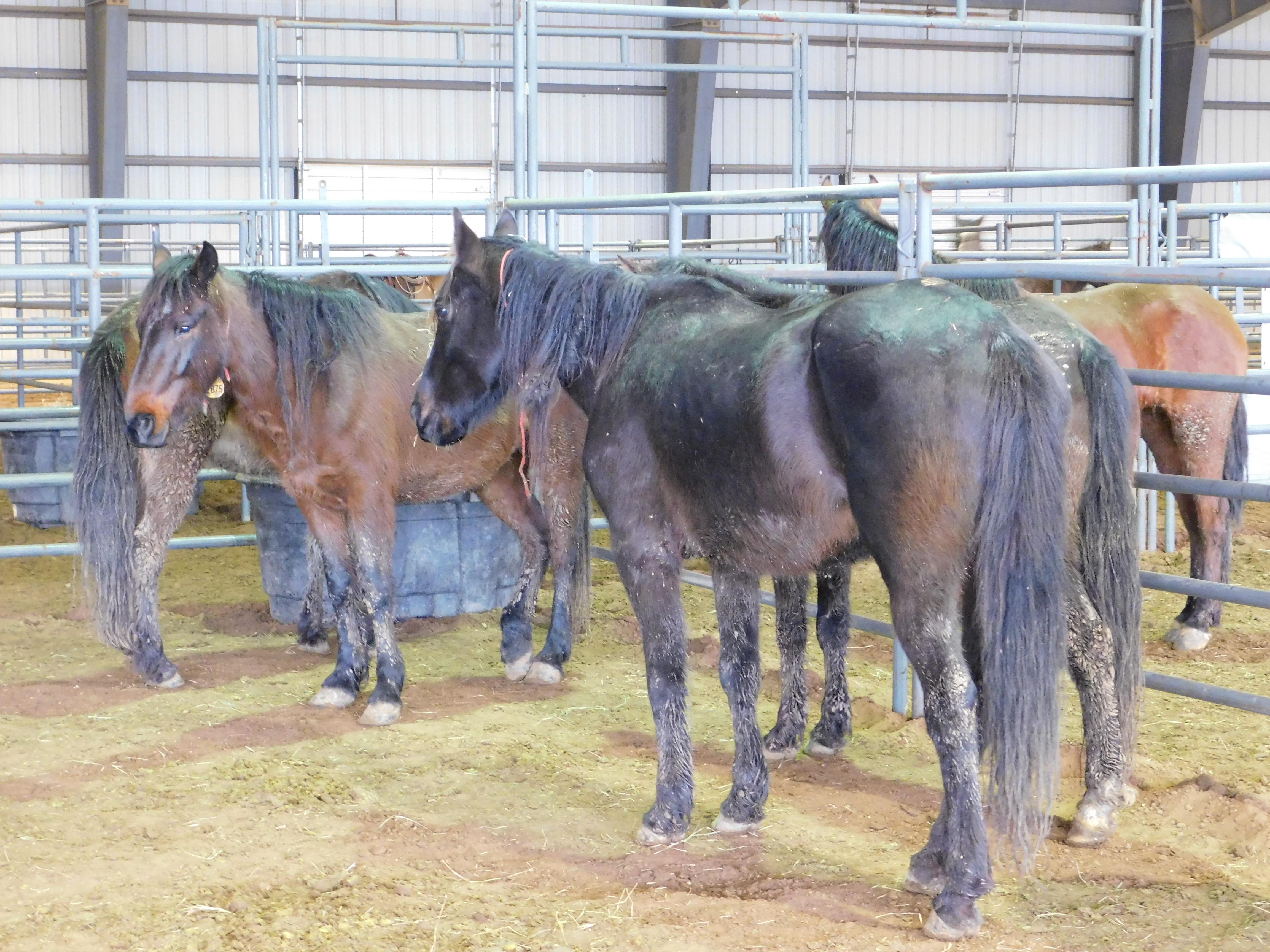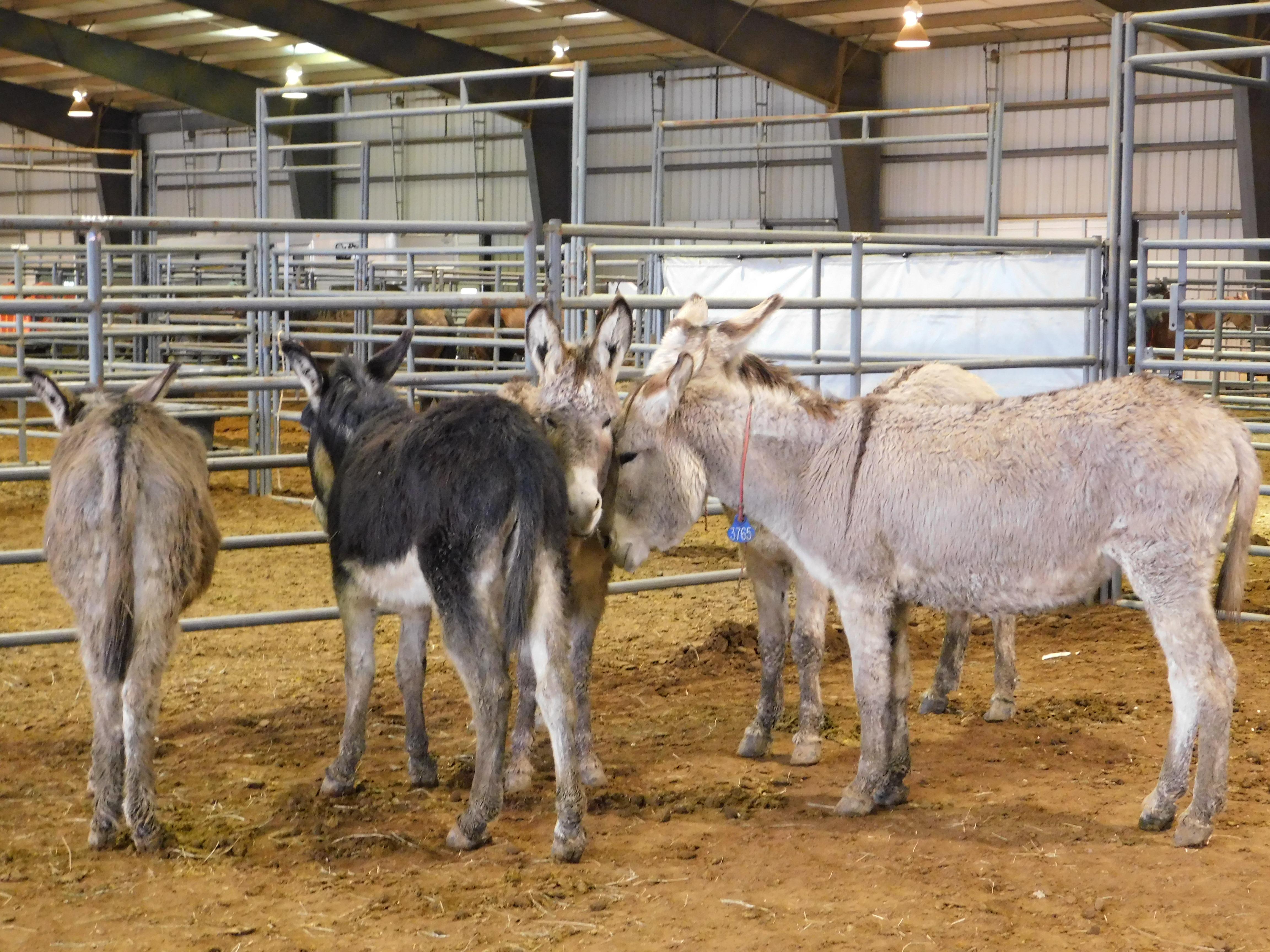
Attending a “Bring Home a Wild Horse or Burro” Event
Candace Wade reports on her experience.
I am compiling a chronicle as an up-close-point-of-view story (to be seen here at Horse Nation) on the adoption, training and challenging life of a Bureau of Land Management (BLM) mustang named Sterling. Sterling’s owner made me aware of a nearby BLM “Bring Home Your Own Wild Horse or Burro” event. I drove to Lebanon, TN, through a chilling rain on February 16, 2018 where 50 mud-caked wild horses and 10 fuzzy-matted burros huddled in pens – in small nose-to-tail groups – waiting for what was next. Sterling, who now falls asleep when her feet are cleaned and was determined to nuzzle my face, was once one of those horses confined in one of those pens.
The sprawling metal barn was a checkerboard of panel fence corrals where the mustangs and burros were contained in groups of five or six. Wild Horse and Burro Specialists from the Southern District Office of the BLM were busy telling their story, filling out adoption papers and giving demonstrations with horses they themselves had adopted.
My Impressions
The humans: I saw several possible adopters perusing the pens. Some visitors were just curious. The BLM staff was well-armed with informative charts, videos and handouts. Most were suspicious of my questions and concerned that I was fueling a hit piece against them.
The horses and burros: At the risk of anthropomorphizing, the horses and burros looked bewildered. Muddy up to the eyes, they huddled in groups in the center of the pens. None were interested in leaving their little herd to meet me. They whinnied and scattered when one of the BLM Specialists entered the pen. Not like Sterling who, a year after adoption, trots up to me, tastes my camera and follows me down the fence line.
What I Learned
Some of the Specialists were as suspicious as the horses and burros when I approached. The fate of what I loosely call “heritage” animals has become a fire-breathing topic with ranchers, the BLM, equine advocates, Big Ag and others armed with strong-held beliefs against each other. The horses and burros struggle in the middle. While a term of art, heritage horses are considered a foundation and/or representation of a region’s original horse population. Heritage horses are internationally recognized and preserved.
Specialist Curtis Patrick took time to tell me about the sterilization programs they are testing on mares. The mares are inoculated and tagged so they can be tracked. This is not a permanent solution for the shrinking grazing lands and growing number of grazers (wild and domestic) competing for the public lands.
I learned that helicopters, four-wheeler and “bait horses” are used by hired contractors to round up the burros and horses and herd them into holding pens. The animals are vetted and transported by tractor-trailer trucks to off-range corral locations around the country.
Specialist Demetris Sanders was patient in explaining the WHAB (Wild Horse and Burro) freeze brand tracking system with symbols that tell everything about the animal. He shared that some horses are given 120 days of training. Some are “green broke,” trained in a Correctional Facility Saddle-Training Program. The animals are then transported to adoption events around the country. The effort to home the animals does not go on forever. I wasn’t told what happens to those who don’t find homes after several events…
Much information is available on the BLM budgets and management proposals to deal with the growing horse and burro population primarily in the western states. This includes the cost of the animals to taxpayers, the millions of dollars cut from the Department of Interior budget and proposed destruction of “excess” horses. Unfortunately, per BLM education materials, herd numbers are up and adoptions are down. Slaughter is on the table to reduce herd levels.
Generations of living wild, survival dependent on being wary, herded by noisy helicopters or four-wheelers, with four months of human contact and training doesn’t make these animals into the barn-Dobbins that we are used to. The adoptable trained mustangs will have been taught (at the minimum) to accept: being led with a rope, their feet picked up and handled, to walk calmly on and off a trailer and to carry a rider. Some trainers say that “green broke” is a shined-up term for “not broke.” That said, as stated on the BLM website, the horses will continue to need daily reinforcement training.
Laying eyes on the wild horses and burros for the first time and meeting Sterling and following her journey has convinced me that these animals can be a life changing adventure for the human — worth the time and money the BLM and adopters put into them. Experiencing the horses and burros convinces me they are worth saving.








Leave a Comment